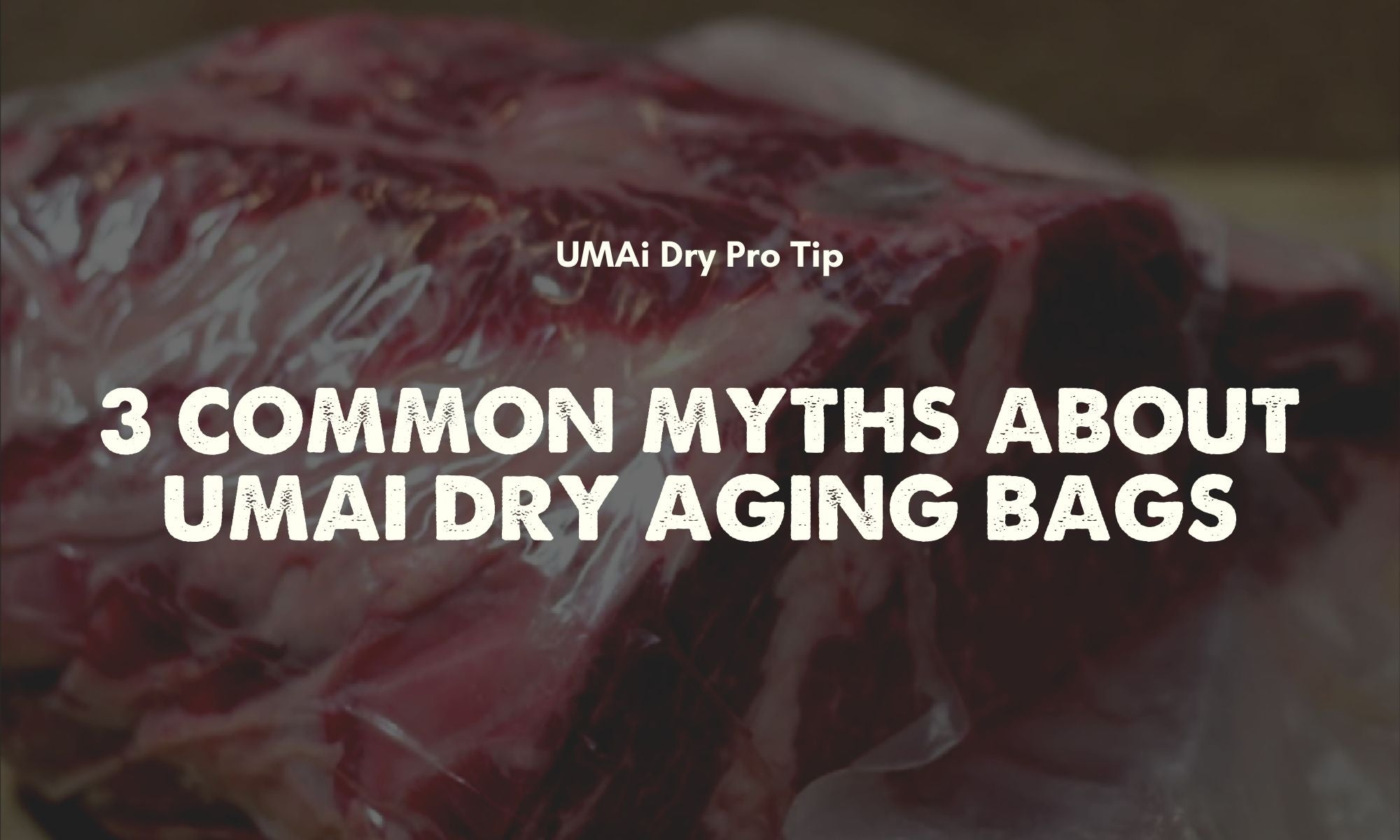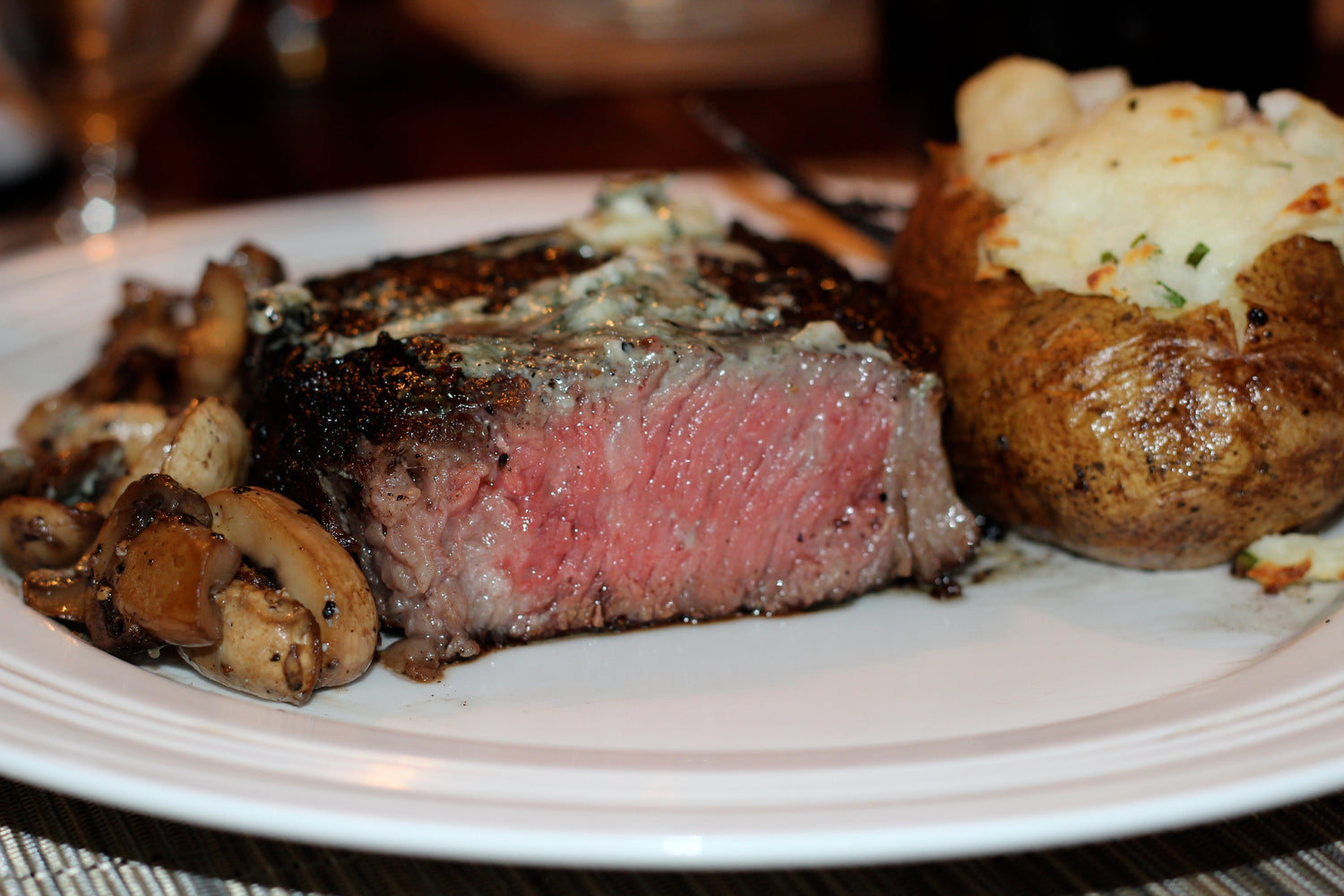With UMAi Dry, anyone anywhere can craft genuine dry aged steak in a typical kitchen refrigerator. Sometimes basic misunderstandings stand in the way of easy, successful dry aging. Understanding the processes behind UMAi Dry will help you eliminate potential waste and get to a delicious steak dinner faster. Read over this list of myths and facts to help simplify the process
Myth 1: The bags will look, feel, and act like a vacuum sealer bag.
Since you can apply UMAi Dry with a vacuum sealer, first-time customers often expect that UMAi Dry bags should perform like a typical vacuum preservation bag, like those made by FoodSaver®. In fact, the two bags are completely opposite.
Typical vacuum preservation bags are designed to block oxygen and moisture. They are laminated, composed of multiple layers of different types of plastic. The inner layer is soft and melts easily. The outer layer provide the oxygen barrier and is rigid. This material is also embossed with a waffle pattern that creates channels through with a "channel vacuum sealer" draws air out of the bag through the clamped opening.
Vacuum storage bags are designed to block oxygen, so any air pockets create the dangerous potential for anaerobic bacteria growth, like botulinum. They also prevent all moisture loss, so a good for freezing.
UMAi Dry aging bags are designed to allow both moisture and oxygen exchange. This supports authentic dry aging. UMAi Dry is single layer and smooth. The VacMouse® vacuum adapter strip provides just enough air gap at the top of the bag for the vacuum sealer to dry the membrane down against the moist meat surface. Although UMAi Dry is softer than a laminated vacuum bag, it melts at a lightly higher temperature. When sealing, the entire material will melt and must be allowed to cool and harden.
The UMAi Dry membrane forms a bond with the moist proteins on the surface of the meat. Only 75-80% surface contact between meat and UMAi Dry is necessary for safe, consistent dry aged results. Air pockets pose no risk because UMAi Dry allows for oxygen exchange. The oxygen allows the enzymes in the meat to tenderize the meat, and the fat to develop the rich umami of dry aged beef. Moisture is gradually released from the meat increasing it's rich, beefy flavor.
Myth 2: A porous bag will let in unwanted smells, flavors, and bacteria.
Within the first few days of aging, the proteins coating the surface of the beef and UMAi Dry material will unite, forming a perfectly transparent shield that both protects your beautifully aging steak and enables it to release moisture in the surrounding environment.
Unlike open air aging, with UMAi Dry we recommend using your regular modern frost free kitchen fridge. When the fridge is is regular use, the compressor is regularly triggered, and the humidity levels are managed. Typically, old beer or garage fridges, or small dorm, or drink fridges do not have the humidity management feature that guarantees reliable dry aging. Make sure that your refrigerator maintains a temperature between 34-38 Fahrenheit to ensure proper aging and prevent spoilage.
Myth 3: Dry Aging beef with UMAi Dry is expensive.
In a study comparing traditional dry aging techniques with UMAi Dry, researchers at Kansas State University concluded:
"Vacuum-packaged aging of beef typically implies 'wet aging.' With much greater than normal moisture permeability, the [UMAi Dry] bags in this study may be used to dry-age beef to increase yields, limit microbial contamination, and provide business management efficiencies without affecting product quality,” . Click here to read more.
UMAi Dry is available in a range of sizes, and also offers applications for charcuterie and traditional slow fermented dry salumi.
Find them on our website.





